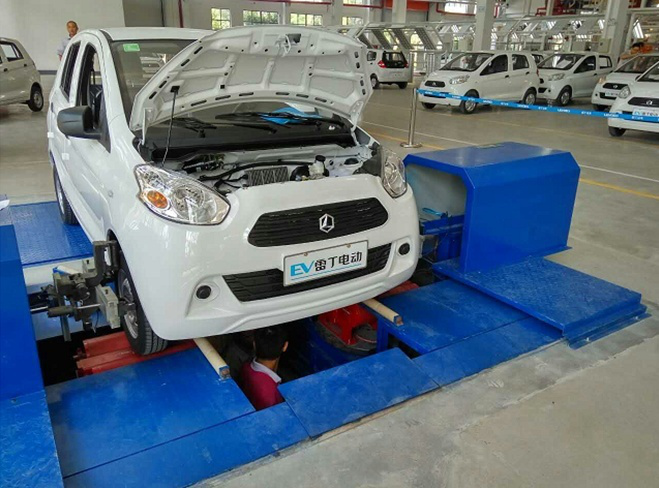The statistics presented in the car manual are the same as those displayed on the dynamic 4-wheel alignment computer, which means they are universal. Generally speaking, 4-wheel alignment must be performed under the following conditions.
1. After replacing new tires or after a collision caused by repairs;
2. Partial wear on one side of the front, rear, left and right tires;
3. The car steering wheel is too heavy or shakes during safe driving;
4. When driving straight, the car deviates to the left or right;
5. Although there is no left or right deviation, for maintenance purposes, it is recommended to do it once after a new car has been safely driven for 3 months, and once after half a year or 10,000 kilometers.
The dynamic 4-wheel alignment instrument is a precise electronic measuring instrument, which requires careful maintenance during use. In addition, in order to provide customers with a fast, accurate and powerful 4-wheel alignment service, the actual operating staff must be familiar with the application functions of various 4-wheel alignment devices to ensure effective application.

1. Daily maintenance
The key to the maintenance of the dynamic 4-wheel alignment instrument is to ensure that the measurement generator part of the controller should be anti-fouling, sun-proof, isolated and waterproof. In the application, it should be handled with care and carefully, and the instrument should not be subjected to impact to prevent damage to the instrument.
2. Stable power supply application
The rated current of APL4 wheel alignment power supply is 220V. If the external power supply is unstable, a power stabilizer should be used.
3. Charge the sensor properly
After each 4-wheel alignment test, the sensor must be reliably hung on the server cabinet to keep good contact between the charging base and the sensor. If the 4-wheel aligner is not used frequently, the sensor should also be charged every few days (usually 2 to 3 days). Frequent charging can ensure the normal service life of the sensor's rechargeable battery.
Related News
- How does the dynamic four wheel aligner avoid communication interference?
- Introduction to vehicle electrical inspection
- How to choose a good pass four wheel aligner
- What is the assembly line
- The important role of the through four wheel aligner
- The four main points of 3D laser four wheel aligner maintenance
- Working principle of electric chassis dynamometer
- Vehicle off-line comprehensive diagnostic equipment
- How to choose a good dynamic four wheel aligner
- Precautions for selecting a non-contact four-wheel aligner
- What are the misconceptions car owners have about non-contact 4-wheel alignment
- What is the importance of dynamic 4 wheel alignment nowadays?
- Let's understand the dynamic 4 wheel alignment market
- Comparison of the characteristics and cost analysis of 3D dynamic positioning platform and static 3D positioning instrument
- Comparison between dynamic 4 wheel aligners and static aligners
- What is the difference between a static 4-wheel alignment instrument in a repair shop and a dynamic surface measurement 4-wheel alignment instrument in a car factory?
- Comprehensive Drum Test Bench Program Specification (I)
- Introduction to the main components of the comprehensive drum test bench (I)
- Comprehensive drum test bench program instructions (2)
- Introduction to the main components of the comprehensive drum test bench (2)
